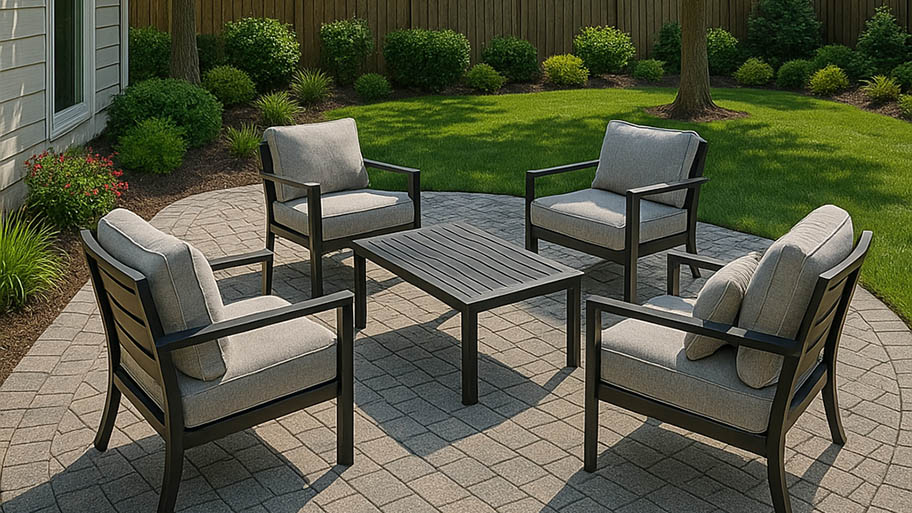
Looking to elevate your backyard aesthetic with a patio? Use this paver patio cost guide to help you estimate your total project cost before you get started.
How to choose a block size for a rock-solid retaining wall
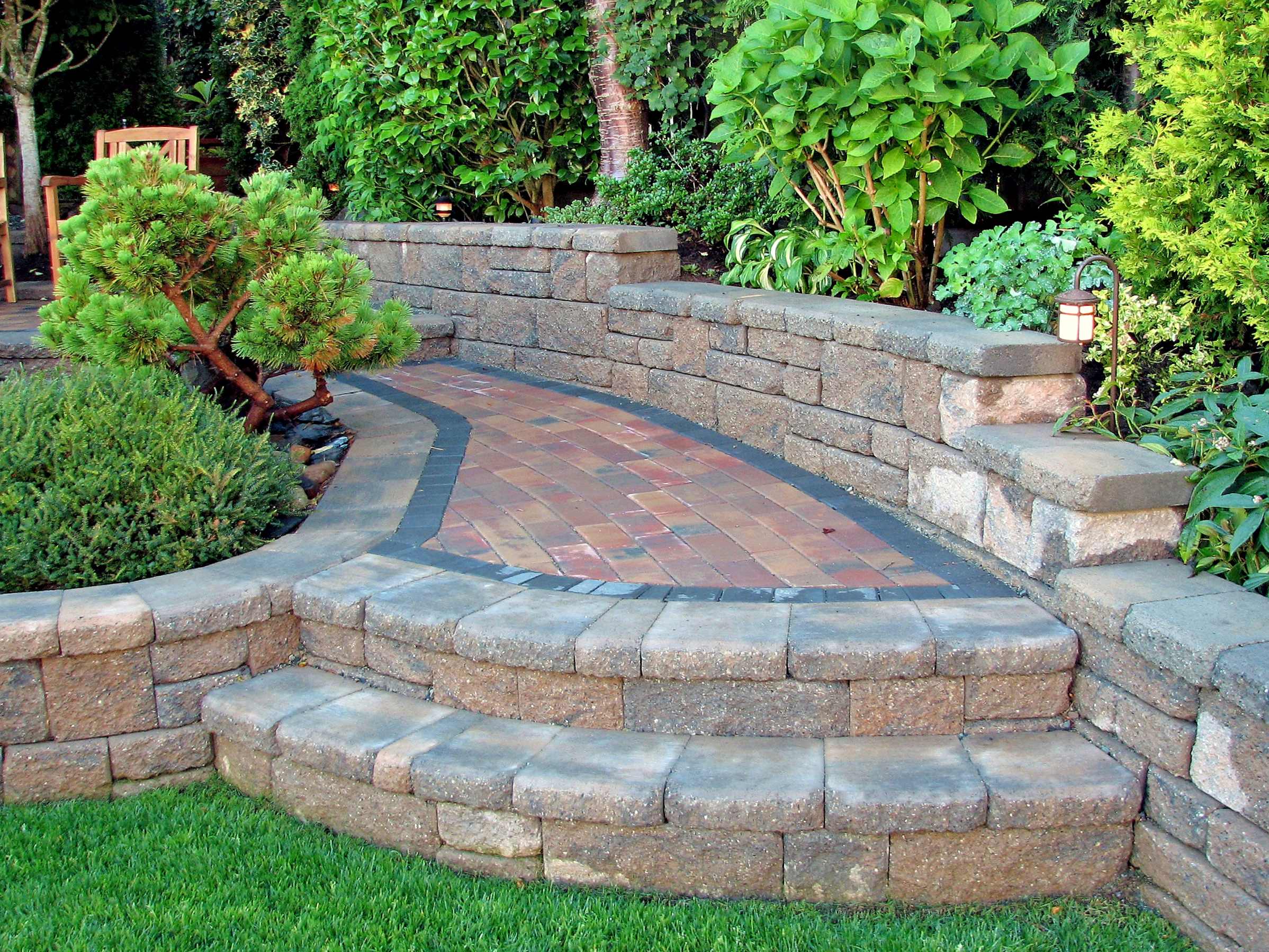

Concrete blocks come in depths ranging from 4 to 12 inches, all of which are traditionally 16 inches long and 8 inches tall.
You need to base your retaining wall depth on the height of your wall to ensure it can withstand the lateral forces placed on it from behind.
You can build smaller retaining walls out of other types of blocks or bricks of varying sizes.
For any wall over 3 feet tall, you’ll need a professional to reinforce the wall to ensure it has the proper strength.
Building a retaining wall might seem easy in practice, but choosing the right size blocks for your project can make the difference between a wall that lasts for decades and one that collapses prematurely. Understanding the standard retaining wall block dimensions and what size you need for your landscaping project is a crucial place to start for safety and wall longevity.
Retaining wall blocks come in many different sizes and shapes, but the concrete blocks that most retaining wall installers and homeowners use do have standard sizes. They come in depths ranging from 4 inches to 12 inches in 2-inch increments, and all of them are 16 inches long and 8 inches tall.
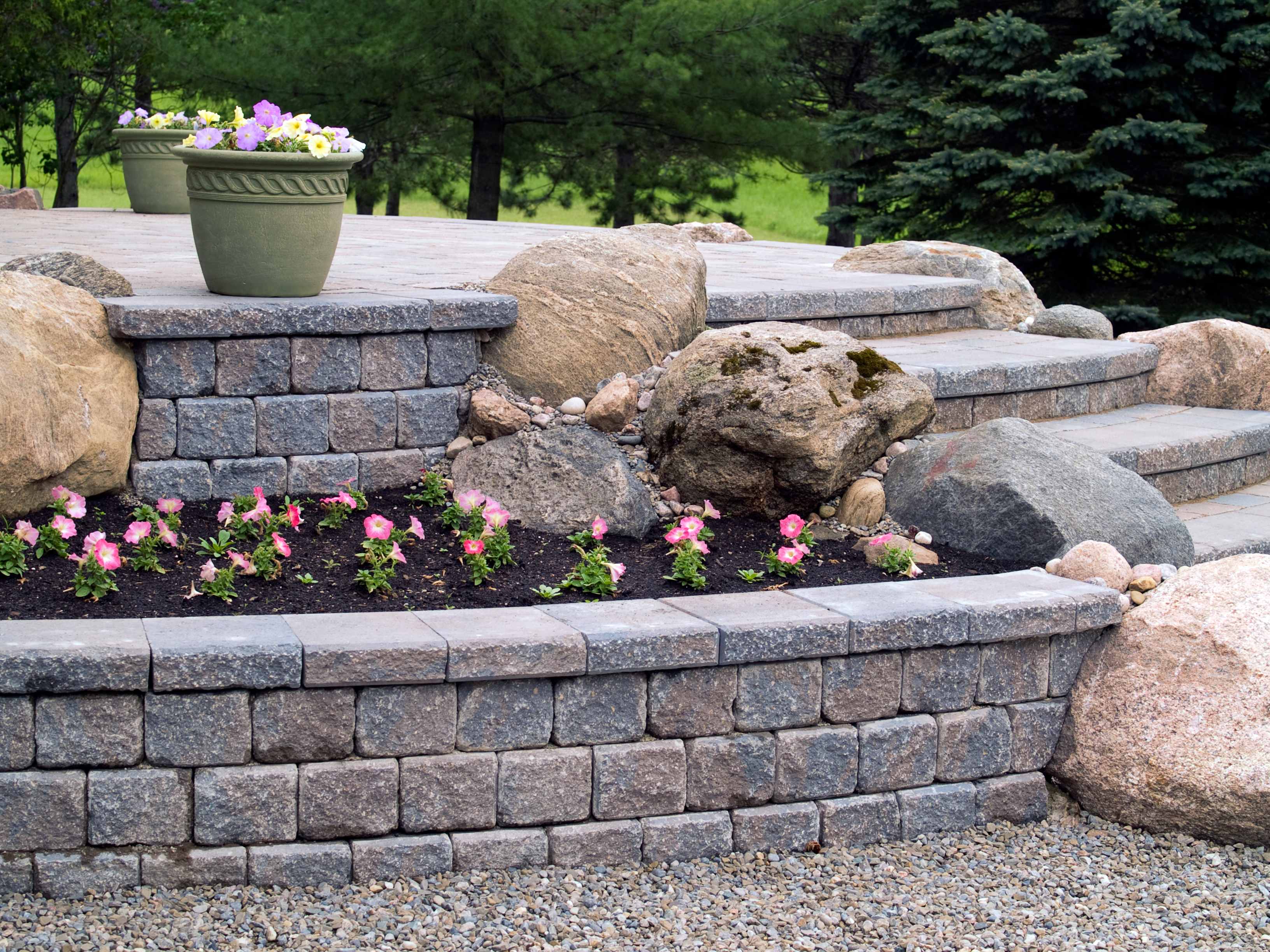
The height of your retaining wall is going to determine what size retaining wall blocks you need, as taller walls need deeper blocks for adequate support.
Gravity walls are the most common types of retaining walls that you construct with blocks that don’t interlock, aren’t reinforced, and just depend on their own weight and friction for stability. For these, your block depth should be 50% to 66% of your wall height. Given that the maximum block depth that’s usually available is 12 inches, the tallest retaining wall you should aim to build yourself would be 24 inches. For anything larger, consult a retaining wall professional to reinforce the wall.
| Block Depth (in.) | Height (Gravity) |
|---|---|
| 4 | 6–8 inches |
| 6 | 9–12 inches |
| 8 | 12–16 inches |
| 10 | 15–20 inches |
| 12 | 18–24 inches |
For shorter retaining walls that are under 1 foot tall, you can use slim concrete blocks that are 4 to 6 inches deep. Use 4-inch concrete blocks to save money on materials if your wall is under 8 inches and requires just a single layer of blocks, and upgrade to 6-inch blocks for added stability for walls between 8 and 12 inches tall. For walls between 8 inches and a foot tall, you’ll need two layers of concrete block walls.
For retaining walls that are around 1 foot tall, you can use concrete blocks that are 6 to 8 inches deep. Keep retaining wall costs low by choosing the thinner of the two if your wall is exactly a foot tall or just below a foot. Using 8-inch retaining wall blocks can support walls up to 16 inches tall and will be more than strong enough for a wall that’s 12 inches tall. For this size, you’ll need two layers of blocks stacked on top of one another.
A 2-foot wall is generally the largest retaining wall you should try to build yourself, and for this height, you’ll need 12-inch deep concrete blocks stacked in three layers.
For retaining walls that are higher than 2 feet tall, you should hire a professional. At this height, you can no longer achieve the 50% to 66% ratio of the block depth to wall height, so even 12-inch deep concrete blocks won’t be sufficiently stable. A professional can reinforce the wall using a variety of methods to get your wall well above the 2-foot mark.
Concrete retaining wall blocks come standard in 16-inch lengths and 8-inch heights, with depths ranging from 4 inches to 12 inches. You can measure the length and height of the wall you want to figure out how many blocks you need for your retaining wall, and then base the depth on the wall height using the table above. Keep in mind that you can also order half blocks in most cases, which have the same height and depth but come in shorter lengths, usually 8 inches.
When in doubt, consult a professional to determine the right size retaining wall block for your project. A pro can take many factors into account to get the right depth, including the quality of the soil or other material behind your wall, top-down forces that contribute to lateral forces, your local climate, and more.
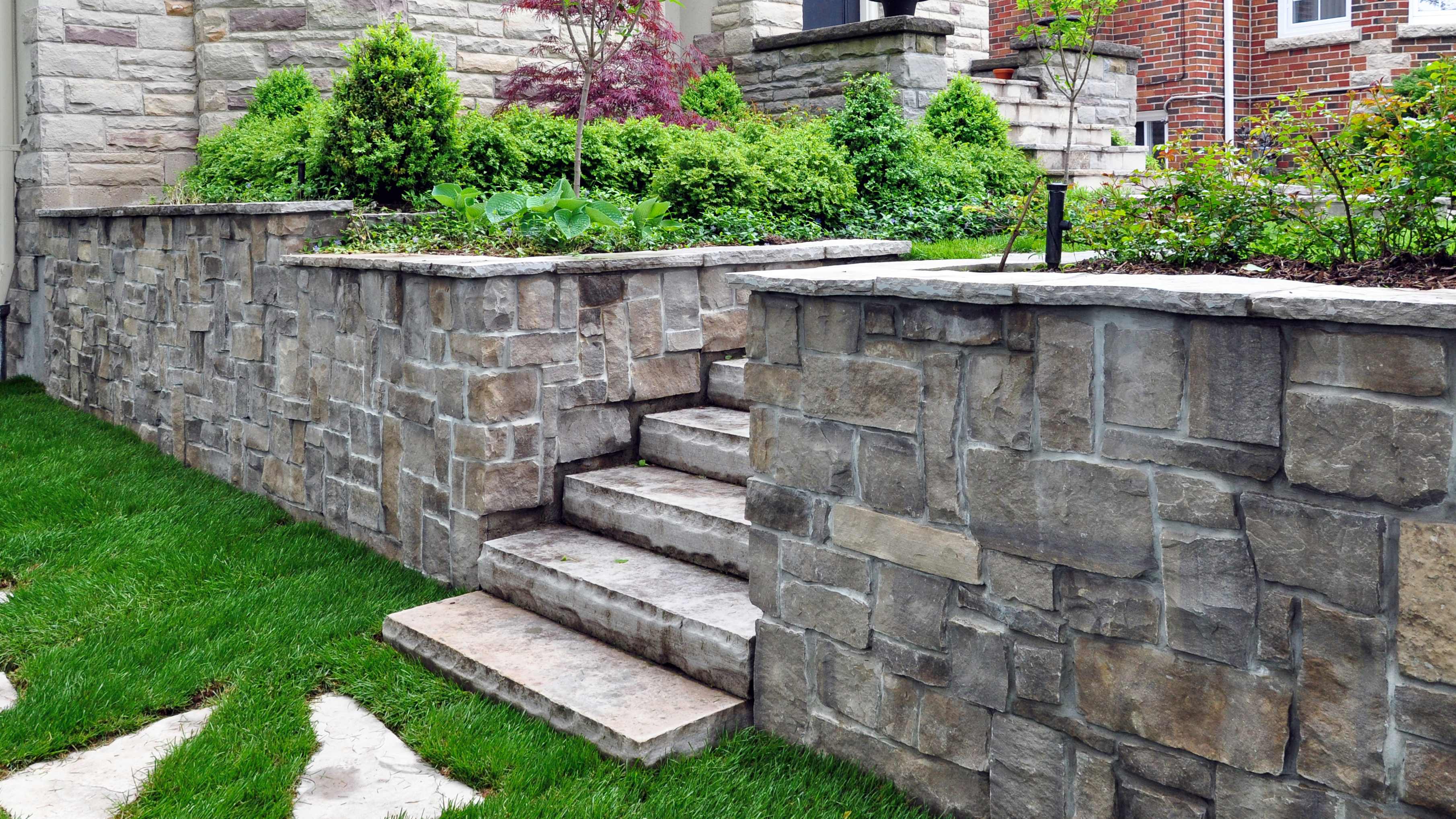
Even if you don’t have a professional taking every factor into account, there are a handful of things you should consider to get the right retaining wall block size.
As mentioned above, the height of your wall is the primary determining factor for the minimum block depth you can safely choose. For the best results and the lowest risk of wall collapse, go a little wider than you think you need based on averages.
The length and height of concrete blocks are fixed at 16 inches and 8 inches, respectively, which means you can easily determine how many rows of blocks you need to reach your desired wall height. If you’re using paver stones, bricks, or another hardscaping material, make sure you consider the height of the blocks to see how many layers you’ll need.
The lateral or sideways force on your retaining wall can vary significantly, depending on what’s behind the wall. If it’s just loose soil, as in the case of a garden bed, you can go with the standard block width for your desired wall height. If you’re building a retaining wall to border a driveway or walkway that will see heavier loads, consider going deeper than you’d need for general purposes.
Soil quality and drainage behind your wall can play a role in lateral forces, too. Areas where the soil has a high clay content will expand in the presence of moisture and put excess hydrostatic pressure on your wall. You should choose blocks with a greater depth than you’d otherwise need for retaining walls that will hold back expansive clay soil.
Many homeowners install toppers on their retaining walls to give them a more finished appearance, especially if they’re using standard concrete blocks that have voids that are visible from above. Toppers come in different widths, so you may want to choose your topper first and then pick your retaining wall block size to match. Make sure your topper is a bit wider than the retaining wall blocks for the nicest appearance.
Finally, your budget will play a role in the retaining wall block size that’s right for your project. If you have the option based on the block depth size requirements in the table above, downsize to the next smallest size to save on concrete retaining wall block costs. Have some more room in your budget? Consider upsizing for increased safety and wall durability.
Finding out that you have retaining wall blocks that are wider than you need usually isn’t an issue. In fact, it’s always better to go with a greater block depth for increased safety. However, it can be problematic if you have a specific wall topper in mind that has a depth that matches or is thinner than your blocks. If that’s the case, you can either contact the topper manufacturer to see if they have a wider option, or you can hire a pro to replace your retaining wall blocks with a thinner version.
More often, homeowners will find that their retaining wall blocks aren’t thick enough. This is more problematic because it can lead to wall instability and even collapse. The best solution in this case is to hire a retaining wall installer near you to replace the wall entirely or to add reinforcements to enhance stability. This can be an expensive process, but it’s definitely worth the safety and peace of mind you’ll get as a result.
From average costs to expert advice, get all the answers you need to get your job done.

Looking to elevate your backyard aesthetic with a patio? Use this paver patio cost guide to help you estimate your total project cost before you get started.

While a stone wall typically costs thousands of dollars, the value it brings to your home can raise its value both aesthetically and monetarily.
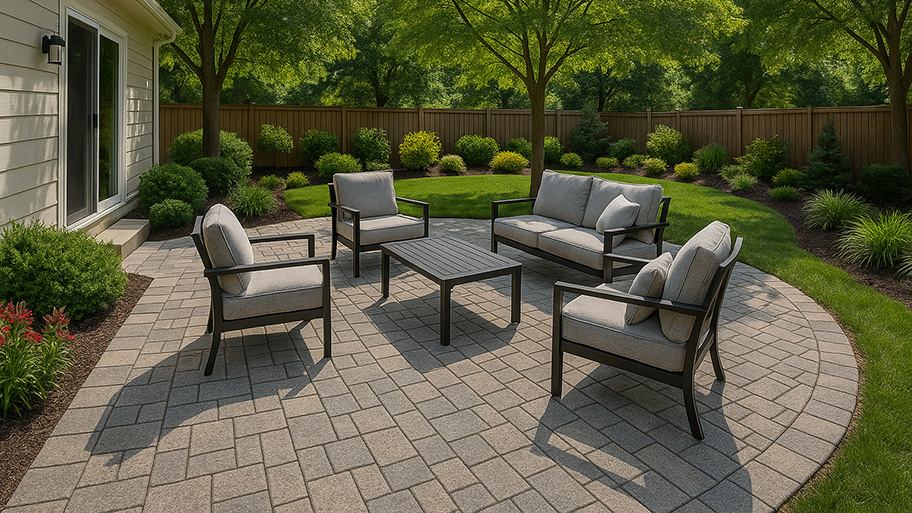
Thinking about installing concrete or brick pavers for a walkway or patio? Learn the cost of interlocking pavers in this informational guide.

If your yard is looking drab, installing interlocking pavers can be a smart way to increase your home’s curb appeal. Here are some common questions you’ll discuss with a pro.

If you’re looking to build a brick pathway or patio, there are lots of walkway patterns to choose from. Here’s a list of the most popular designs and types.

Create a beautiful, long-lasting path by learning how to lay stepping stones using our guide and a bit of sweat equity and muscle power.